Viet Nam—exposed to the threat of various infectious diseases. For more than 10 years, Japan has been supporting the country's infectious disease control initiatives by networking and enhancing the capabilities of key laboratories.
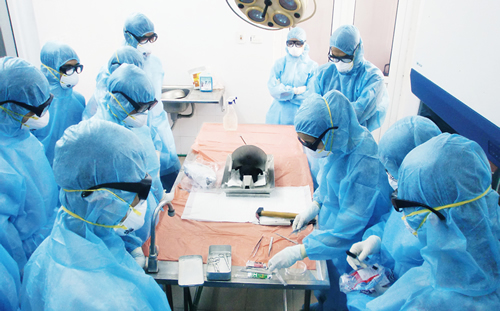
Rabies test training

Viet Nam
Name: Socialist Republic of Viet Nam
Capital: Hanoi
Currency: Dong (VND)
Population: 95.54 million (as of 2017, World Bank)
Official Language: Vietnamese
The Vietnamese government has identified the prevention of infectious disease epidemics as one of its most serious challenges and has placed special emphasis on the urgent development of fast and accurate testing systems. With the ever-increasing pace of globalization,
strengthening Viet Nam's infectious disease control is something that will contribute to international society as a whole.
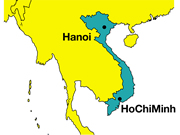
Rapid Testing Prevents Outbreaks
In November 2002, a respiratory disease of unknown cause was reported in Guangdong Province, China. This new form of pneumonia, named SARS (severe acute respiratory syndrome), soon spread beyond the borders of China and ran rampant, mostly throughout East Asia, infecting 8,096 people and killing 774 over the course of approximately nine months. Then, in 2004, avian influenza broke out throughout the entire Southeast Asian region. Even though relatively few people were infected, it was highly virulent with a mortality rate of 60 to 70 percent. Viet Nam, with approximately 40 fatalities, was especially hard hit during the outbreak.
These outbreaks prompted the Vietnamese government to create a national infectious disease epidemic prevention system in 2006. JICA, which was asked to assist, has continued to provide tangible and intangible support, establishing a Biosafety Level 3 (BSL-3) laboratory at the National Institute of Hygiene and Epidemiology (NIHE) in Hanoi, and providing a mobile BSL-3 laboratory to the Pasteur Institute in Ho Chi Minh City (PI-HCMC), as well as providing technical cooperation to improve pathogen testing capabilities. As a result, high-risk pathogens can now be tested internally, rather than having to send them to advanced laboratories outside the country. In fact, the epidemic of measles in 2014 was quickly suppressed thanks to these improved testing capabilities. JICA has also networked institutions such as NIHE and PI-HCMC with regional Preventive Medicine Centers, helping to harmonize rules for transportation procedures and other matters, and making it possible to carry out pathogen testing faster and more accurately.
Masanori Kai, chief advisor of the Project for Capacity Development for Medical Laboratory Network on Biosafety and Examination of Highly Hazardous Infectious Pathogens in Viet Nam, Laos and Cambodia, explains how the improvement in laboratory testing capabilities prevents the spread of infectious diseases. "With many infectious diseases, it is vital to detect the disease early and accurately and to promptly treat the patient, who is the potential source of the outbreak, and, when necessary, other people with whom that person has been in contact." However, there are challenges in Viet Nam, especially in regional areas. "The results of Phases 1 and 2 of this project, which started in 2006, have been evident in large research institutions such as the NIHE, and in some regional areas where training has been carried out. They now have the capability to quickly carry out diagnosis. However, laboratories at many of the nation's Preventive Medicine Centers still lack the requisite skills and equipment to quickly carry out the standard tests necessary to prevent epidemics. Consequently, our efforts to support the centers are now focused on providing essential equipment and training in new molecular biological pathogen detection methods."
Appropriate Handling of Pathogens
Biosafety, protecting the body from pathogens and preventing pathogens from escaping laboratories, is a primary area of assistance. Emphasis is placed on teaching basic safety management practices, such as the need to wear gloves, masks, and gowns, not eating or drinking in the laboratory, and the need to strictly follow procedures such as sterilization and disinfection when entering and leaving the laboratory. It is an ongoing process, and even in Japanese laboratories biosafety training programs are conducted yearly. Kai elaborates, "Since there are plans to establish an additional permanent BSL-3 laboratory at PI-HCMC, it is necessary for laboratory personnel to thoroughly study the situation in Japan. Visiting laboratory equipment manufacturers and seeing first-hand the strict guidelines in place at Japanese facilities offers a training environment that's unavailable in Viet Nam."
In the long run, Kai wishes to establish a system whereby Vietnamese personnel can continue to deal with infectious diseases independently, even after the completion of the project.
"NIHE's biosafety capabilities have definitely improved since the start of the project, and the number of cases in which pathogens are tested for is steadily increasing. We want to continue to contribute to infectious disease control in Viet Nam by enhancing testing capabilities and improving the content of training, for example, creating manuals for laboratory techniques for an ever-increasing number of pathogens."
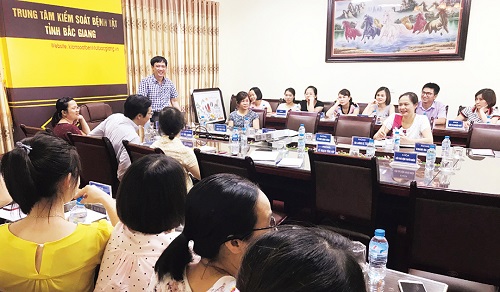
A lecture on the features of biosafety during the training on dengue fever in Bac Giang Province (June 2018).
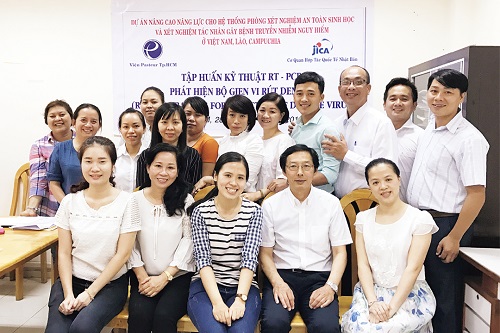
Dengue fever has shown a tendency to spread throughout Asia. The photo shows Preventive Medicine Center staff who attended training on dengue fever at PI-HCMC (March 2018).
Laboratories that Do Not Leak Pathogens
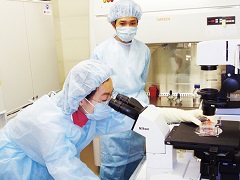
Facilities handling microbes and pathogens adhere to a particular biosafety level (1 to 4) determined by meeting specific standards such as high-performance filters and interlocking doors. Facilities with a higher biosafety level are able to handle higher-risk pathogens. With the BSL-3 laboratories introduced through Japanese assistance, Viet Nam is now able to handle high-risk pathogens such as rabies, avian influenza, and multidrug-resistant tuberculosis.




scroll